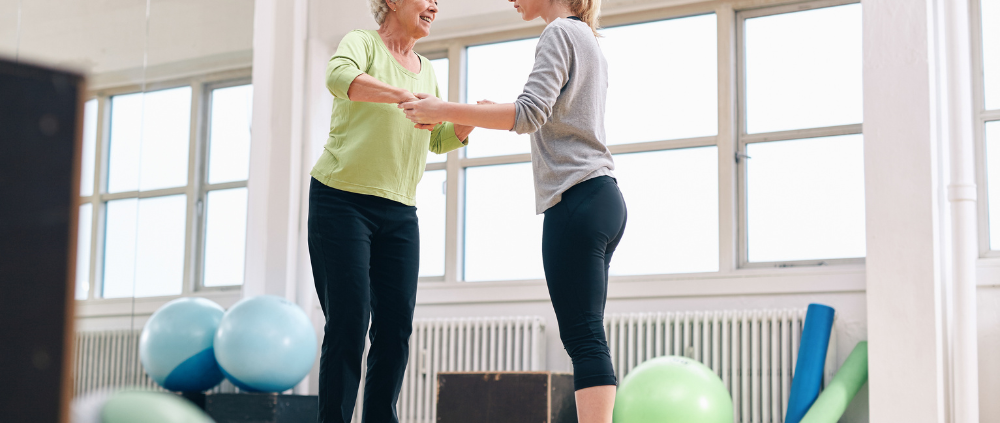Balancing Act: Keeping You On Your Feet
Do you find you are less confident than you used to be when walking in a crowded environment or on an uneven surface? Are you avoiding certain activities, or perhaps gripping the handrail a little tighter these days? If so, you’re not alone. Up to 85% of older adults are afraid of falling, and with good reason. One out of every five falls results in a serious injury and falling once doubles your likelihood of falling again.
Most people don’t even think about their balance until it starts to deteriorate, but there’s a lot going on behind the scenes to keep us on two feet. Our brain uses sensory input from our feet to adapt to the surface, and proprioceptors on our joints to know where we are in space. Our eyes and ears give us information about our environment, and our inner ear, or vestibular system, keeps our equilibrium. These systems work together to tell our motor system how to make corrections and keep us upright.
These corrections are typically fairly automatic and start with engaging our ankles, then bending at the hips, and eventually a quick step in order to recover. If these reactions aren’t strong enough or quick enough, we end up on the floor. Unfortunately, many medical conditions, as well as general deconditioning, can have a negative impact on your ability to both identify and correct a loss of balance. The good news, however, is there are things you can do to not only maintain your stability but gain it back! Some of these strategies include:
- Strengthening your hips and thighs. These large muscles are responsible for keeping you upright and shifting your weight into your base of support
- Stretching out your calves. Flexibility in your ankle actually plays a big role in whether your body can effectively right itself when you start to wobble.
- Getting your eyes and ears checked regularly to maintain optimal function.
- Wearing properly fitting footwear with good traction and reviewing your home for possible trip hazards.
- If you’re struggling with dizziness, have your doctor review your medications with you for possible side effects.
The fear of falling may be a healthy fear at times. After all, it often keeps us from doing unsafe things. However, studies show that a fear of falling is associated with higher risk of falls, partly because individuals reduce their regular mobility and avoid activities that would normally challenge their system. This results in increasing weakness and perpetuates the cycle of instability.
Programs that target balance, like yoga and tai chi, are great, but the key to staying committed is to pick something you really enjoy. Activities like golf or gardening can be just as effective at challenging your system. Even going for a walk with a friend will require you to turn your head and hold a distracting conversation while picking your feet up and avoiding obstacles! If you’re unsure where to start, talk to a local physical or occupational therapist. They can do a specialized assessment to determine where your specific problems lie and recommend strategies to address them. Most importantly, keep moving! As they say, a body in motion stays in motion!
Rachel Hett, PT, DPT is a graduate of the University of Florida where she received her Bachelor of Health Science as well as her Doctor of Physical Therapy. She is an experienced physical therapist as well as Team Leader in the senior living setting. Her professional interests lie in Falls & Balance, Vestibular, Dementia, and Neuro programming. Rachel is also a Certified Dementia Capable Care Specialist.



